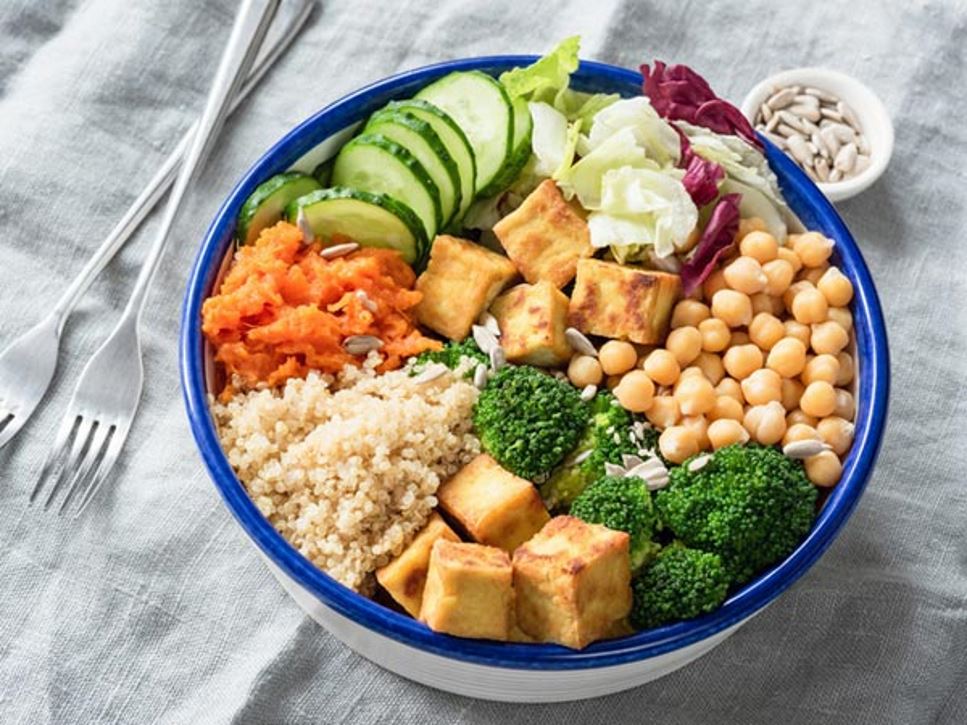Almost every day, research studies about food and nutrition appear in news headlines. So, how can you tell what information is based on strong scientific evidence and what is merely a marketing message? Three free tools can help you make the right food and nutrition choices:
- The Dietary Guidelines for Americans
- MyPlate
- Food Labels
A healthy eating plan that includes all foods is possible. But, it requires an understanding of what’s in the food we eat.
Dietary Guidelines for Americans = Advice on Food Choices to Promote Good Health
The Dietary Guidelines for Americans are evidence-based food and beverage recommendations for individuals in all life stages, including guidance for infants and toddlers — birth to 24 months — and women who are pregnant.
This dietary advice helps you:
- Create and maintain a healthful diet.
- Understand how to reduce your risk for many chronic diseases.
- Find out how to reach and maintain your body's healthy weight.
A group of health care providers, nutrition and medical researchers and professors — the Dietary Guidelines Advisory Committee — develop the guidelines. Clinicians, public health agencies and educational institutions use them to inform patient care, community programming and coursework for future health care providers. The guidelines also serve as the basis for federal food and nutrition education programs, nutrition policy and programs, and national health promotion and disease prevention initiatives.
The U.S. Department of Agriculture and the U.S. Department of Health and Human Services jointly publish the guidelines. They update the guidelines every five years. Registered dietitian nutritionists provide substantial input to these evolving lifestyle recommendations.
MyPlate = A Tool to Help You Eat the Right Amounts of Different Foods
MyPlate helps you follow the advice detailed in the Dietary Guidelines for Americans. This plate image is a helpful way to learn how to portion foods from various food groups. The MyPlate website provides detailed information on what counts as a serving from each food group and how many servings per day people need depending on their age and sex. A variety of resources and educational materials are available for consumers and professionals.
Food Labels = Information on What’s in the Foods You Buy
Food labels help you learn the nutrition content of foods and beverages. The goal of these information panels is to provide you with:
- Nutrition information about packaged and processed foods.
- An easy-to-read Nutrition Facts Panel where you can quickly find the information needed to make healthful food choices.
- The amount per serving of saturated fat, cholesterol, sodium and other nutrients.
- Nutrient reference values, or percent Daily Values, which help you see how a specific food fits into your overall daily diet.
- Standard meanings of terms that describe a food's nutrient content, ensuring that such terms mean the same for any product on which they appear. For example, "light," "low-fat" and "high-fiber."
- Standard serving sizes that make it easier to compare the nutrition of similar products.
Find a Nutrition Expert
Looking for credible nutrition information and recommendations? The Academy of Nutrition and Dietetics' network of credentialed food and nutrition practitioners are ready to help!

